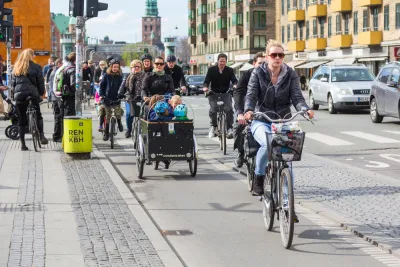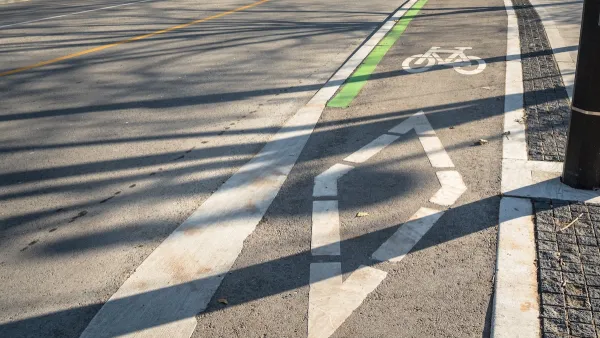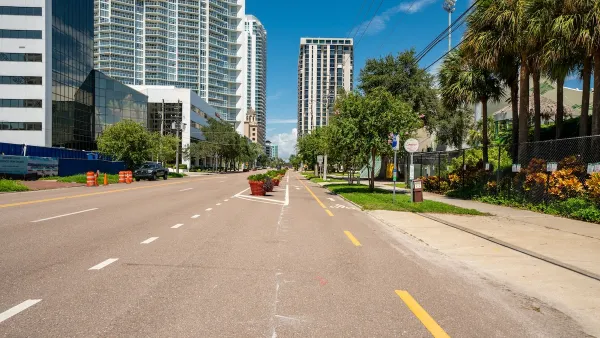Key to explaining the popularity of biking in Copenhagen is its cultural attitude, which is also based on sound cost-benefit analysis. Until Americans change how they value transport modes, protected bike lanes may be elusive.

"In a new paper, Stefan Gössling from Lund University and Andy Choi from the University of Queensland take a look at Copenhagen's approach and argue that it explains how the city has built out so much dedicated cycling infrastructure, including miles of uninterrupted and separated bike lanes, and even dedicated bike tunnels, bridges, and traffic lights," writes Ben Schiller for Fast Company.
The study, "Transport transitions in Copenhagen: Comparing the cost of cars and bicycles," published in the May 2015 issue of Ecological Economics, is focused primarily on costs of two modes of transport: bicycling and driving. "It is the first time a price has been put on car use as compared to cycling," states Science News.
From report's abstract:
In many cities of the world, bicycle infrastructure projects are implemented to foster more sustainable transportation systems. However, such projects have often raised questions regarding their public funding, as they entail considerable costs. This paper reviews cost–benefit analysis (CBA) frameworks as these are presently used to assess bicycle infrastructure projects.
"When the city decides on a cycling project, it compares the cost to that of a road for cars, and it includes not only the upfront amount, but also things like the cost of road accidents to society, the impact of car pollution on health, and the cost of carbon emitted to the atmosphere," writes Shiller.
After including these factors, it comes to a rather startling calculation. One kilometer driven by car costs society about 17 cents (15 euro cents), whereas society gains 18 cents (16 euro cents) for each kilometer cycled, the paper finds. That's because of factors like the health benefits of cycling and the avoided ill-effects of cars.
Finally, protected bike lanes play a key role, asserts one of the report's author.
"If we want people to cycle, then we have to change our approach towards urban infrastructure. Cyclists will only cycle [in large numbers] when they feel physically safe and when it's fast, which means they need to be physically separated from cars," Stefan Gössling says.
Hat tip to Len Conly, Sierra Club Transportation Committee
FULL STORY: How Copenhagen Became A Cycling Paradise By Considering The Full Cost Of Cars

Analysis: Cybertruck Fatality Rate Far Exceeds That of Ford Pinto
The Tesla Cybertruck was recalled seven times last year.

National Parks Layoffs Will Cause Communities to Lose Billions
Thousands of essential park workers were laid off this week, just before the busy spring break season.

Retro-silient?: America’s First “Eco-burb,” The Woodlands Turns 50
A master-planned community north of Houston offers lessons on green infrastructure and resilient design, but falls short of its founder’s lofty affordability and walkability goals.

Test News Post 1
This is a summary

Analysis: Cybertruck Fatality Rate Far Exceeds That of Ford Pinto
The Tesla Cybertruck was recalled seven times last year.

Test News Headline 46
Test for the image on the front page.
Urban Design for Planners 1: Software Tools
This six-course series explores essential urban design concepts using open source software and equips planners with the tools they need to participate fully in the urban design process.
Planning for Universal Design
Learn the tools for implementing Universal Design in planning regulations.
EMC Planning Group, Inc.
Planetizen
Planetizen
Mpact (formerly Rail~Volution)
Great Falls Development Authority, Inc.
HUDs Office of Policy Development and Research
NYU Wagner Graduate School of Public Service




























